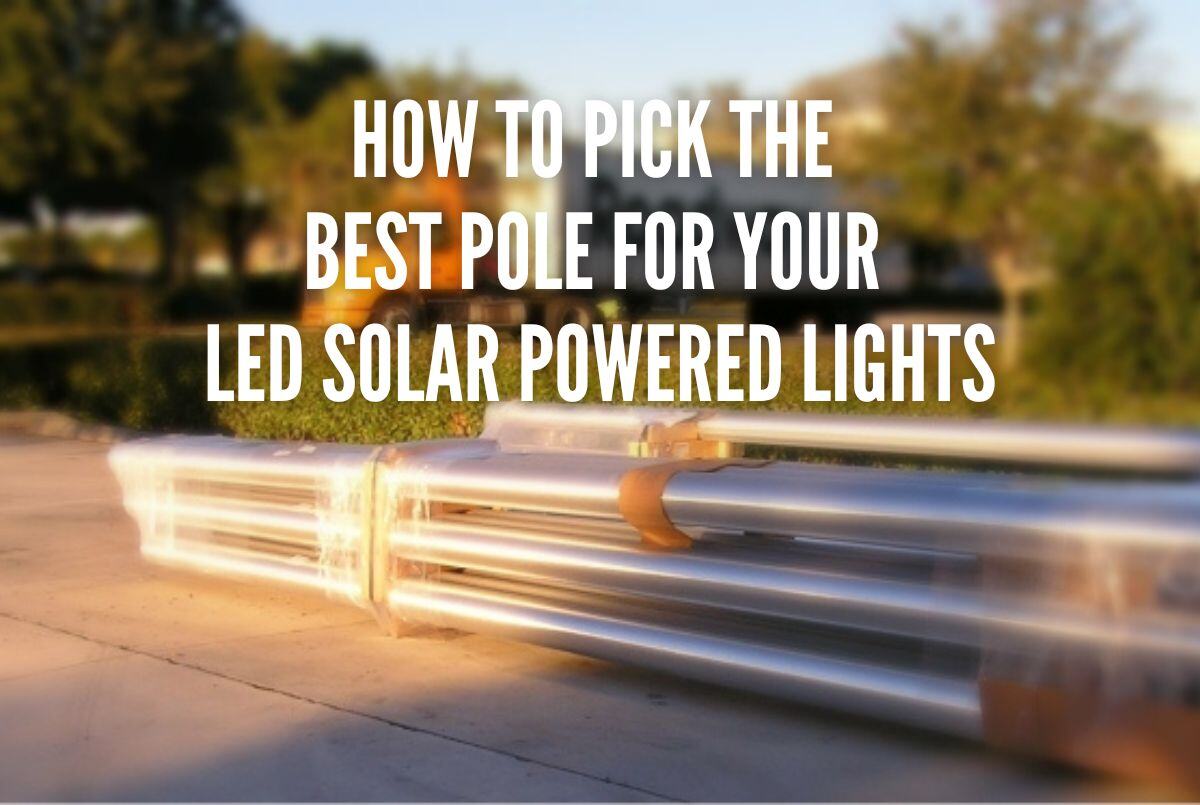Selecting the right pole for your solar LED lights may seem simple, but there’s more to it than meets the eye. With options like steel, aluminum, concrete, anchor base, and direct burial poles, finding the perfect fit for your solar project can be overwhelming.
In this guide, we’ll discuss the pros and cons of each pole type so you can make an informed decision about your solar LED lighting or off-grid power system.
Why a Custom Pole Matters for Solar Lighting
Many solar lighting companies offer one-size-fits-all poles, but these can fail in extreme conditions—especially in coastal climates or high-wind areas. A poorly chosen pole can topple, risking damage and safety hazards.
At SEPCO, we design custom poles to match your system’s load, wind resistance, and mounting requirements. Whether you need a small pole for remote power or a tall one for area lighting, a custom solution ensures:
✅ Stability – Properly sized to handle solar panel weight and wind load (EPA).
✅ Safety – Engineered to withstand high winds without failure.
✅ Optimal Mounting – Correct height and clearance for light distribution.
Why Pole Size is Critical for Solar Lighting Systems
Bigger isn’t always better—but in solar lighting, size matters. A solar pole must support:
-
The weight of solar panels, batteries, and fixtures.
-
Wind resistance (EPA) to prevent collapse in storms.
-
Proper mounting height for optimal light coverage.
What happens if the pole is undersized?
-
Increased risk of pole failure in high winds.
-
Potential liability issues if injury or damage occurs.
-
Poor light distribution due to incorrect mounting height.
For example, a 15' fixture with a large decorative bracket needs extra pole height compared to a simple mount. Always ensure your pole accommodates both the solar array and lighting needs.
Direct Burial vs. Anchor Base Poles: Which is Best?
Benefits of Direct Burial Poles
-
Cost-effective – Single-piece construction reduces manufacturing expenses.
-
Easier installation – No need for concrete foundations; just dig, set, and backfill.
-
Field-adjustable – Allows solar panels to face due south for maximum efficiency.
Best for: Projects with stable soil and budget-conscious installations.
Benefits of Anchor Base Poles
-
Vehicle protection – Higher base prevents damage in parking lots.
-
Shorter pole needed – A 25’ anchor base pole can achieve the same height as a 30’ direct burial pole.
-
Replaceable – If damaged, the pole can be swapped without replacing the foundation (if bolts are intact).
Best for: High-traffic areas or locations requiring taller mounting heights.
Aluminum vs. Steel vs. Concrete Poles: Which Material is Best?
Aluminum is lightweight, rust-proof, recyclable, and has decorative options. It is perfect for coastal areas and eco-friendly projects.
Steel is strong, cost-effective, and has galvanized/painted finishes. It is perfect for high-wind regions and budget-friendly builds.
Concrete is ultra-durable and withstands hurricanes, perfect for coastal and extreme weather locations.
Key Considerations:
-
Aluminum is ideal for corrosion resistance and long lifespan (up to 50 years).
-
Steel offers strength at a lower cost, especially for taller poles.
-
Concrete is the best choice for hurricane-prone areas but is less common for standard lighting.
Final Thoughts: Choosing the Right Solar Light Pole
Selecting the best pole for your commercial solar lighting system involves:
✔ Assessing wind load requirements (check AASHTO standards).
✔ Deciding between direct burial vs. anchor base.
✔ Choosing the right material (aluminum, steel, or concrete).
By understanding these factors, you’ll ensure a durable, safe, and efficient solar lighting installation that stands the test of time.
Need help selecting the perfect pole? Contact us today for a custom solution tailored to your project!


